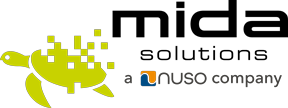This last period has been unlike any other: restrictions caused by the pandemic have widely affected everybody’s lives and people had to move basically everything online: from their social life to purchases and work. This has also changed the way people interact with companies online, and their expectations towards customer services: people are now more anxious and less patient and they expect their problems to be solved immediately or in the shortest possible time.
Companies had to adapt and enhance their customer service to meet these new needs and changed behavior, also because recent surveys highlight that this global shift to online is here to stay. Moving the entire workforce work from home (WFH) is a big challenge, but there are some cloud contact center must-have features that can help operators perform their job at best also when working from home:
- Seatless option – this is THE must-have feature of a modern contact center. The web-based console allows maximum flexibility: your staff will always work using the same familiar platform, both when working remotely and from the office. This must also have a simple and intuitive UI to help agents to better manage their daily tasks and efficiently handle a large volume of calls. Everything they need must be available in the cloud and just a click away.
- Ready/Not Ready option – being able to manage the presence manually, when needed, is really important: agents need to be able to set their presence status during working hours. If the agent sets himself/herself as not available, no more calls will be received until he/she changes the status again, putting it back in ready mode. This helps to reduce missed calls and also helps to reduce daily stress level, allowing operators to temporarily log out from a queue if needed (e.g. to take a short break or to open the door to the delivery guy)
- Interactive Voice Response and Queue Manager – the ultimate goal of customer service is to help the caller solve his/her issue in the shortest possible time. An IVR could make the difference in achieving the goal before getting them in line with operators. A professional automated attendant can guide clients to the shortest path to obtain the information they need, or to the most appropriate expert available. This avoids long and irritating waiting times. Moreover, thanks to specific call distribution algorithms decided by the company, each call can be served by the most skilled agent available, the agent who has been idle for more time or other criteria.
- Integration with CRM – a contact center must be the key hub of all the interactions between the company and its customers. Having and managing all customer information quickly during a phone call is essential for agents to better understand requests, leave tracks of them and maintain every stakeholder within the company informed on how the service is performing.
- After Call Work (ACW) function – agents must have a specific amount of time after the interaction with a customer to make administrative activities, e.g. scheduling follow-up contacts and actions, sending communications to other stakeholders within the company, etc. This helps them to keep track of all the precious information collected during the call with the customer.
As shown in a recent survey by Claromentis, almost 73% of UK workers want to have the freedom to decide whether to work from home or from the office after the Pandemic.
Keep in touch with us to discover Mida cloud contact center solutions or just to obtain some professional suggestions to improve your UC allowing remote and hybrid work.
